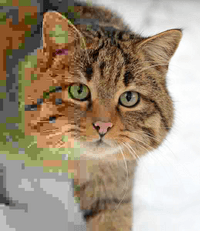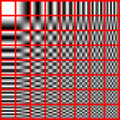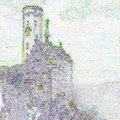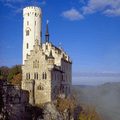JPEG facts for kids
JPEG (pronounced JAY-peg) is a very popular way to make digital pictures smaller. It's especially used for photos taken with digital cameras. When you save a picture as a JPEG, the file size gets much smaller, which makes it easier to store and share.
The cool thing about JPEG is that you can choose how much to shrink the picture. If you want a super small file, you might lose a tiny bit of detail. But usually, JPEG can make a picture file 10 times smaller without you even noticing any difference in quality!
JPEG is used in many different types of image files. For example, when you take a picture with your phone or digital camera, it's usually saved as a JPEG file (often called JPEG/Exif). It's also the most common way to share photos on the internet. Most people just call these files "JPEG" even though there are a few slightly different versions.
The name "JPEG" comes from the Joint Photographic Experts Group. This was the team of people who created the standard way to compress these images. JPEG files usually end with .jpg or .jpeg after their name.

A photo of a european wildcat with the compression rate decreasing, and hence quality increasing, from left to right
|
|
| Filename extension | |
|---|---|
| Internet media type |
image/jpeg
|
| Type code | |
| Uniform Type Identifier (UTI) | public.jpeg |
| Magic number | |
| Developed by | Joint Photographic Experts Group |
| Initial release | September 18, 1992 |
| Type of format | lossy image format |
| Standard | ISO/IEC 10918, ITU-T T.81, ITU-T T.83, ITU-T T.84, ITU-T T.86 |
Contents
Why JPEG is Great for Photos
JPEG compression works best for pictures that have lots of different colors and smooth changes, like photographs or paintings. This is because it's designed to cleverly remove details that your eyes probably won't miss.
When you share pictures online, making them smaller is super important. Smaller files load faster, which means websites appear quicker on your screen. This is why JPEG is so popular for web images. It's also the main way digital cameras save your photos.
When Not to Use JPEG
While JPEG is amazing for photos, it's not always the best choice.
Pictures with Sharp Lines
JPEG isn't great for images with sharp lines, like drawings, cartoons, or text. When you compress these types of images with JPEG, you might see blurry edges or weird blocky patterns. For these kinds of pictures, it's better to use other file types like PNG or GIF. These formats save images without losing any detail.
Editing Pictures Many Times
JPEG uses a "lossy" compression method. This means that every time you save a JPEG file, it loses a tiny bit of information. If you edit a picture and save it as a JPEG over and over again, the quality will slowly get worse. It's like making a copy of a copy of a copy – each new copy isn't quite as good as the original.
If you plan to edit a picture many times, it's a good idea to save the first version in a format that doesn't lose quality, like TIFF. Then, after you're done editing, you can save the final version as a JPEG to share it.
Images for kids
See also
 In Spanish: Joint Photographic Experts Group para niños
In Spanish: Joint Photographic Experts Group para niños






